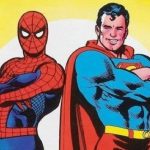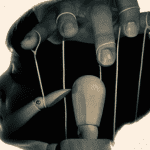 Weird Stuff
Weird Stuff  Weird Stuff
Weird Stuff  Our World
Our World 10 Archaeological Discoveries of 2025 That Refined History
 Weird Stuff
Weird Stuff 10 Fascinating Facts You Might Not Know About Snow
 Miscellaneous
Miscellaneous Top 10 Things Crypto Was Supposed to Change & What Actually Did
 History
History 10 Huge Historical Events That Happened on Christmas Eve
 Music
Music 10 Surprising Origin Stories of Your Favorite Holiday Songs
 History
History 10 Less Than Jolly Events That Occurred on December 25
 Weird Stuff
Weird Stuff 10 Funny Ways That Researchers Overthink Christmas
 Politics
Politics 10 Political Scandals That Sent Crowds Into the Streets
 Weird Stuff
Weird Stuff Ten Bizarre Facts About The Doge Meme
 Weird Stuff
Weird Stuff 10 Weird Things People Used to Do at New Year’s
 Our World
Our World 10 Archaeological Discoveries of 2025 That Refined History
 Weird Stuff
Weird Stuff 10 Fascinating Facts You Might Not Know About Snow
Who's Behind Listverse?

Jamie Frater
Head Editor
Jamie founded Listverse due to an insatiable desire to share fascinating, obscure, and bizarre facts. He has been a guest speaker on numerous national radio and television stations and is a five time published author.
More About Us Miscellaneous
Miscellaneous Top 10 Things Crypto Was Supposed to Change & What Actually Did
 History
History 10 Huge Historical Events That Happened on Christmas Eve
 Music
Music 10 Surprising Origin Stories of Your Favorite Holiday Songs
 History
History 10 Less Than Jolly Events That Occurred on December 25
 Weird Stuff
Weird Stuff 10 Funny Ways That Researchers Overthink Christmas
 Politics
Politics 10 Political Scandals That Sent Crowds Into the Streets
 Weird Stuff
Weird Stuff Ten Bizarre Facts About The Doge Meme
A Closer Look at 10 of Tim Burton’s Memorable Movie Characters
Few filmmakers have created a visual style so instantly recognizable that it becomes its own adjective. Yet “Burtonesque” has entered our cultural vocabulary, describing a darkly whimsical aesthetic that blends Gothic elements with childlike wonder.
Burton’s characters exist in a realm between nightmare and fairy tale, often featuring exaggerated proportions, stark contrasts, and visual elements derived from German Expressionism. Drawing from his background as an animator at Disney, where his quirky style initially struggled to find acceptance, Burton developed a signature approach to character design that emphasizes emotional storytelling through visual means. Do you recognize these Burton visual icons?
Related:Top 10 Behind The Scenes Facts About Tim Burton Movies
10Catwoman’s Stitched Leather Costume
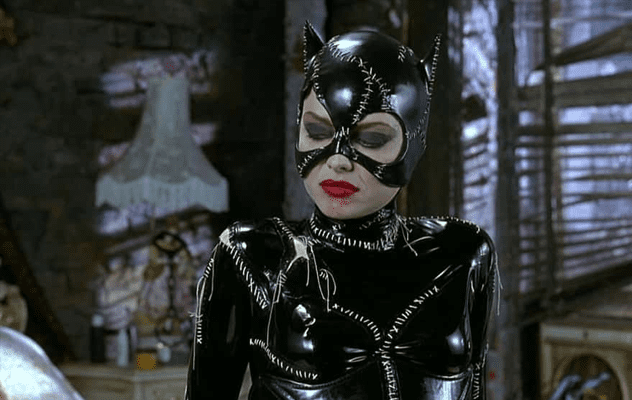
When Michelle Pfeiffer appeared as Selina Kyle/Catwoman in Batman Returns (1992), her handcrafted, stitched leather costume revolutionized how female characters could be portrayed in superhero films. Unlike the sleek, polished superhero costumes that dominated cinema, Catwoman’s outfit looked improvised and battle-damaged. The costume’s patchwork nature, with visible stitching that resembled scars, visualized Selina’s transformation from meek secretary to vengeful predator. Burton and costume designer Mary Vogt created something that was simultaneously sexy and disturbing, an approach that influenced countless character designs that followed.
9The Corpse Bride’s Decaying Blue Body
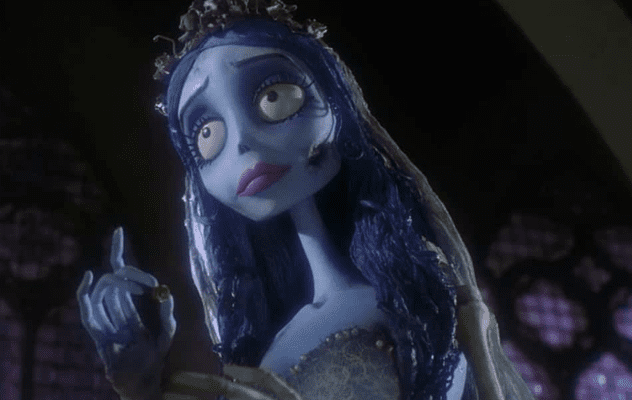
For 2005’s stop-motion film Corpse Bride, Burton created a titular character whose ghostly beauty challenges conventional notions of what makes a character appealing. With her decaying blue skin, exposed bones, and tattered wedding dress, Emily (voiced by Helena Bonham Carter) could have been merely grotesque, but Burton infuses her design with grace and melancholy. The blue skin tone – a Burton signature – creates visual continuity with the film’s underworld scenes while distinguishing her from the living characters. Emily’s appearance influenced how animated films could portray unconventional beauty, proving that audiences could connect emotionally with characters far outside human norms.
8Mrs. Lovett’s Wild Hair And Victorian Dresses
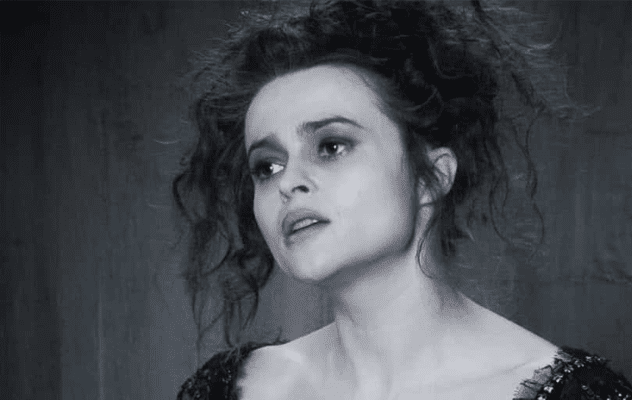
For Helena Bonham Carter’s portrayal of Mrs. Lovett in Sweeney Todd, Burton created a character whose appearance perfectly communicates her chaotic inner life. Her wild, untamed hair seems to defy gravity, while her Victorian dresses combine elements of period accuracy with Burton’s signature stylization. The dark circles under her eyes and pale complexion suggest someone who, like Sweeney, exists in a moral twilight.
What makes this design particularly effective is how it contrasts with Sweeney’s more controlled appearance. Where he is precise and contained, she is chaotic and expansive, a visual representation of their different approaches to similar moral corruption. Burton’s decision to give Mrs. Lovett elaborate but deteriorating clothing suggests someone clinging to respectability while engaging in increasingly horrific acts. The character design influenced how period films could blend historical accuracy with expressionistic elements to reveal character psychology.
7The Mad Hatter’s Colorful Mismatched Ensemble
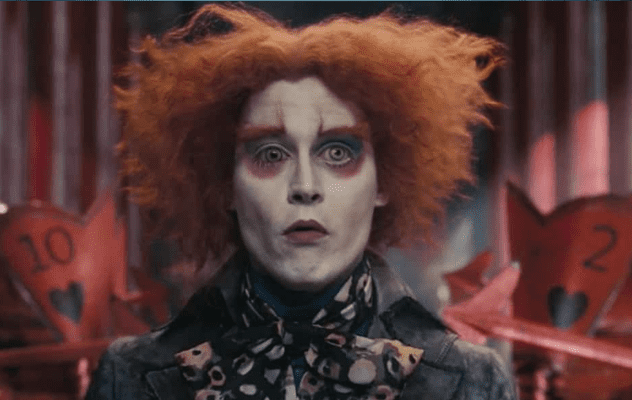
Johnny Depp’s Mad Hatter in 2010’s Alice in Wonderland features one of Burton’s most visually complex character designs. With electric orange hair, dramatically enlarged eyes (enhanced through CGI), and skin that changes color with his emotions, the Hatter embodies Wonderland’s beautiful chaos. His outfit combines mismatched patterns, textures, and colors in a way that should clash but somehow forms a coherent whole.
The character’s appearance is a masterclass in controlled visual chaos, with each element carefully chosen to communicate his fractured mind. The Hatter’s enlarged eyes, achieved through subtle digital enhancement, give him an otherworldly appearance while still allowing Depp’s performance to shine through. Burton’s decision to have the character’s skin tone change with his emotions added another layer of visual storytelling that hadn’t been seen before in a major studio film.
6The Headless Horseman’s Gothic Armor
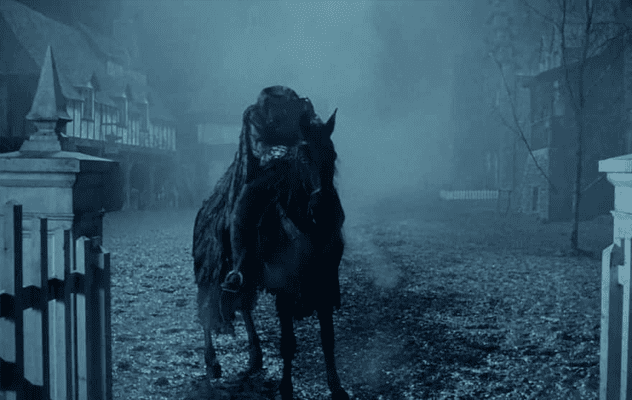
For 1999’s Sleepy Hollow, Burton created a Headless Horseman whose appearance was both historically grounded and nightmarishly stylized. Christopher Walken’s Horseman appears in flashbacks with sharpened teeth and ghoulish makeup before losing his head, while the headless version wears elaborately designed black armor that makes him resemble a moving shadow more than a man.
The character’s design, with its intricate armor detailing and cape that seems to flow like smoke, transformed Washington Irving’s relatively simple ghost story into a full-blown Gothic horror. Burton’s decision to give the Horseman movements that seemed both human and otherworldly – achieved through a combination of stunt performers and visual effects – created a villain whose very silhouette inspired dread. The design influenced how supernatural creatures would be portrayed in period horror films for years afterward.
5Sweeney Todd’s Gothic Barber Aesthetic
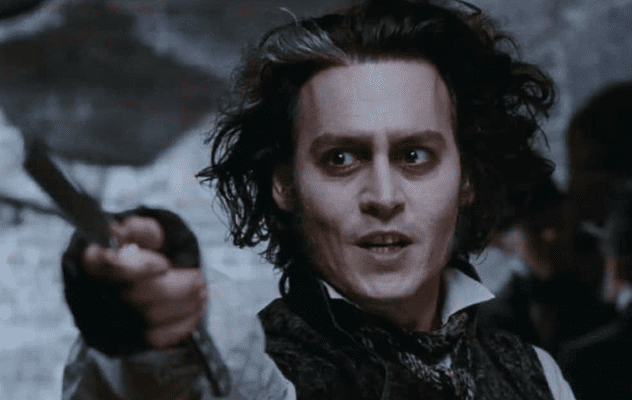
For 2007’s Sweeney Todd, Burton created a character whose appearance perfectly balances humanity and monstrosity. Johnny Depp’s pale, almost vampiric complexion is accented by a shock of white in his dark hair, a visual representation of the trauma that transformed him. His barber outfit, simultaneously proper and menacing, becomes increasingly blood-spattered as the story progresses.
Burton’s design choices tell Sweeney’s story visually, with the character’s appearance deteriorating as his humanity slips away. The stark contrast between Sweeney’s ghostly pallor and the vibrant red blood that increasingly stains his clothing creates a visual progression that mirrors his moral descent. Burton’s decision to emphasize hollow eyes and sharp angles gives Sweeney a predatory quality that makes his transformation from victim to monster visually coherent.
4The Joker’s Permanent Smile And Purple Suit
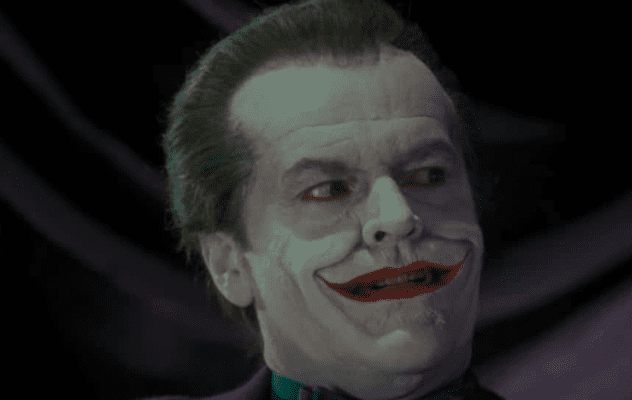
When Burton reimagined the Joker for his 1989 Batman, he transformed the character from a criminal clown into something more disturbing – a man physically transformed by chemicals into a living embodiment of his twisted psychology. Jack Nicholson’s permanently fixed grin, achieved through elaborate makeup rather than CGI, gave the character a disturbing quality that later interpretations would build upon.
Burton’s decision to give the Joker a backstory tied to his appearance was revolutionary for superhero films. The character’s bright purple suit against the dark backdrop of Gotham created visual tension that perfectly captured the character’s chaotic nature. Burton understood that the Joker needed to be both flamboyant and terrifying – a visual opposite to Batman’s shadowy presence. This approach to villain design would influence superhero films for decades.
3Jack Skellington’s Impossibly Thin Silhouette

Though Henry Selick directed 1993’s The Nightmare Before Christmas, the film bears Burton’s unmistakable visual stamp, particularly in its protagonist. Jack Skellington’s impossibly thin frame, with limbs like matchsticks and a skull that somehow conveys a full range of emotions, created a new standard for what animated characters could look like.
Jack’s design is an exercise in minimalism as a skeleton stripped down to its essence yet capable of extraordinary expressiveness. His pinstripe suit creates a striking silhouette that works from any angle, making him instantly recognizable. The character has since appeared on merchandise earning hundreds of millions in revenue, demonstrating how Burton’s visual sensibility created not just memorable characters but cultural phenomena. Jack’s design proved that characters didn’t need conventional features to connect emotionally with audiences.
2Edward Scissorhands’ Pale Complexion And Leather Bodysuit
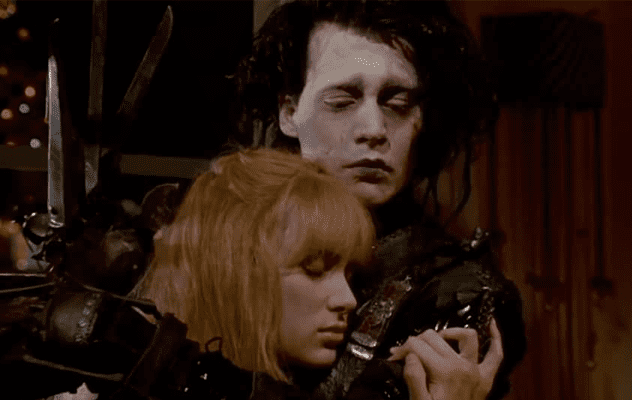
Edward Scissorhands represents the perfect marriage of Burton’s visual style and thematic preoccupations. Johnny Depp’s pale, scarred face contrasts sharply with his jet-black leather bodysuit and wild hair, creating a character who is both threatening and vulnerable. The design brilliantly visualizes Edward’s status as an outsider as someone literally unable to touch the world without destroying it.
The character’s elaborate scissor-hands required numerous puppeteers and stand-ins during filming, but the effort created one of cinema’s most poetic visual metaphors. Edward’s design influenced everything from runway fashion to music videos, with designers like Alexander McQueen citing the character as inspiration. Burton’s choice to give Edward a face covered in scars that resemble stitching reinforces the character’s unfinished nature, while his wild hair suggests the artistic soul trapped within his mechanical exterior.
1Beetlejuice’s Striped Suit And Decaying Appearance
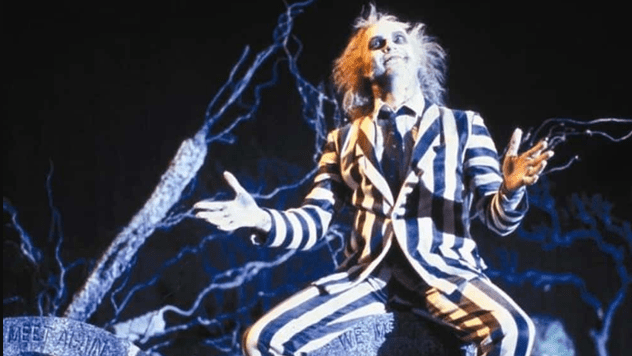
The moment Michael Keaton’s Beetlejuice erupted onto screens in 1988, movies were never quite the same. His black and white striped suit – a visual nod to prison uniforms and carnival attractions – created an instantly iconic silhouette that’s immediately recognizable even in shadow. Burton’s decision to combine 1940s zoot suit styling with decay and filth perfectly captured the character’s sleazy, manic energy.
What makes this design so revolutionary is how it balances horror with comedy. Beetlejuice’s rotting green skin, mossy teeth, and wild hair suggest something that crawled from a grave, but the precision of his striped suit suggests a twisted showman. The character’s visual design became so influential that it spawned an animated series and countless Halloween costumes, proving that Burton’s ability to create memorable character silhouettes was already fully formed early in his directorial career.

